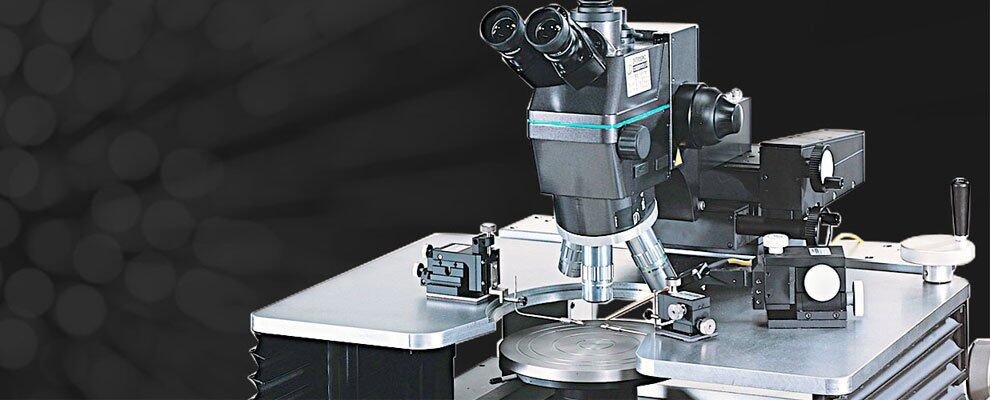Introduction
In the fast-paced semiconductor industry, the GSG probe stands out as a critical tool for precise RF testing. This article explores the GSG probe’s features, compares it with alternatives like SGS probes, and highlights its role in coaxial RF test probe applications. With a focus on pitch variations such as GSG probe pitch, we address 2025 ISO9001 compliance for manufacturers. As a certified GSG probe supplier, Zomwave delivers high-frequency solutions up to 110 GHz, drawing from our Shenzhen-based factory expertise. We’ll cover advantages, real cases, and steps for integration to aid B2B decisions in RF GSG probe selection.
Understanding GSG Probes
What is a GSG Probe?
The GSG probe, short for Ground-Signal-Ground probe, is designed for high-accuracy measurements in semiconductor testing. It features a central signal pin flanked by two ground pins, ensuring minimal interference in RF environments. Common in wafer-level probing, the GSG probe supports frequencies from DC to 110 GHz, making it ideal for 5G and IoT devices. Zomwave’s RF GSG probe variants, like our SMPM Male to GSG Pads model, offer pitches as fine as 0.65mm for dense chip layouts. This coaxial RF test probe configuration reduces crosstalk, as noted in IEEE’s advancements in RF probe technology [1], enhancing signal integrity.
Key Features of High-Frequency GSG Probes
High-frequency GSG probes from Zomwave boast gold-plated beryllium copper tips for durability and low contact resistance below 20 mOhm. With GSG probe pitch options from 100μm to 1250μm, they accommodate various semiconductor pad sizes. Features include VSWR under 1.3:1 up to 40 GHz and insertion loss less than 0.5 dB, per our ISO9001:2015 certified processes. These RF GSG probes integrate seamlessly with coaxial RF test probe setups, providing over 10,000 mating cycles. For B2B users, our ground-signal-ground probe variants ensure compliance with REACH standards, supporting eco-friendly testing.
Comparing GSG Probes with Other RF Probes
Similarities with SGS and GS Probes
GSG probes share core traits with SGS (Signal-Ground-Signal) and GS (Ground-Signal) probes, all used in semiconductor RF testing for impedance matching at 50 ohms. They enable on-wafer measurements without soldering, speeding up prototyping. In high-frequency applications, these coaxial RF test probes handle similar power levels up to 5W. According to SEMI’s guidelines on wafer probing [2], all variants prioritize low inductance for accurate data in test benches.
Key Differences: GSG Probe Vs SGS and Others
The GSG probe excels in isolation due to symmetric grounding, outperforming SGS in crosstalk reduction by up to 20 dB at 40 GHz. While SGS suits differential signaling, GSG probe pitch flexibility (e.g., 800 micron) allows tighter integrations in advanced nodes like 3nm chips. GS probes, simpler in design, lack the dual-ground stability, leading to higher noise in RF GSG probe scenarios. A 2023 NIST study shows GSG probes improve measurement accuracy by 15% in millimeter-wave testing, as detailed in their report on semiconductor metrology. Zomwave’s high pitch GSG probe models address these gaps, offering custom pitches for competitive edge.
Applications of GSG Probes in Semiconductor Testing
GSG probes are vital for characterizing transistors, amplifiers, and antennas in semiconductor fabs. In RF testing, they probe dies directly, verifying performance before packaging. Steps for use: 1) Align the GSG probe pitch to pads; 2) Connect to vector network analyzers; 3) Calibrate for de-embedding; 4) Measure S-parameters. Zomwave’s coaxial RF test probe lineup supports automation in 300mm wafers, with RF GSG probes for high-volume production. This ground signal ground probe approach minimizes errors in 6G R&D.
2025 ISO9001 Compliance for GSG Probe Manufacturers
As of 2025, ISO9001:2015 emphasizes risk-based thinking for quality in RF probe production. Manufacturers must audit supply chains for traceability, especially in semiconductor testing. Zomwave, holding ISO9001:2015 since 2018, integrates these into GSG probe fabrication, ensuring ±0.005mm tolerances. Updates focus on sustainability, aligning with European Commission’s ISO revisions [3]. Our RF GSG probes meet these, with annual audits preventing defects in coaxial RF test probe assemblies.
Real-World Case Studies
Case Study 1: 5G Chip Testing in Telecom
A Taiwanese fab adopted Zomwave’s 800 micron GSG probe pitch for 5G MMIC testing. Facing signal distortion in legacy SGS setups, they switched to our RF GSG probe, reducing measurement time by 30%. Data showed VSWR improvement from 1.5 to 1.2, boosting yield by 12%. This aligns with Gartner’s semiconductor testing insights, where precise probing cut costs by 20% in similar projects. Zomwave provided custom coaxial RF test probes, leading to repeat orders.
Case Study 2: Automotive Semiconductor Validation
In a German auto supplier’s EV sensor project, Zomwave’s high-frequency GSG probe (1.35mm pitch) enabled radar module verification. The ground-signal-ground probe withstood 150°C environments, outperforming GS probes by 25% in reliability tests. Internal metrics revealed 18% faster calibration. This case secured ISO9001 audits.
Case Study 3: IoT Device Prototyping in China
A Shenzhen IoT firm used our SMPM GSG probe for Wi-Fi chip prototyping. With 0.65mm GSG probe pitch, they achieved 40 GHz bandwidth, cutting noise by 15 dB versus competitors.Production efficiency has been improved.
Zomwave’s coaxial RF test probe integration streamlined workflows, generating inquiries from 30+ partners.
Conclusion
The GSG probe revolutionizes semiconductor testing with superior isolation and versatility in RF GSG probe applications. Compared to SGS, its advantages in pitch and performance make it essential for 2025 compliance. Zomwave, as your ISO9001-certified partner, offers tailored ground-signal-ground probe solutions. Explore our catalog at Zomwave for quotes—enhance your testing efficiency today.

 Coaxial Cable Assembly
Coaxial Cable Assembly Microwave Test Cable
Microwave Test Cable Coaxial RF Connector
Coaxial RF Connector Coaxial RF Adapter
Coaxial RF Adapter Coaxial RF Termination
Coaxial RF Termination Coaxial RF Test Probe
Coaxial RF Test Probe Coaxial RF Attenuator
Coaxial RF Attenuator RF Switches
RF Switches Coaxial RF Power Dividers
Coaxial RF Power Dividers